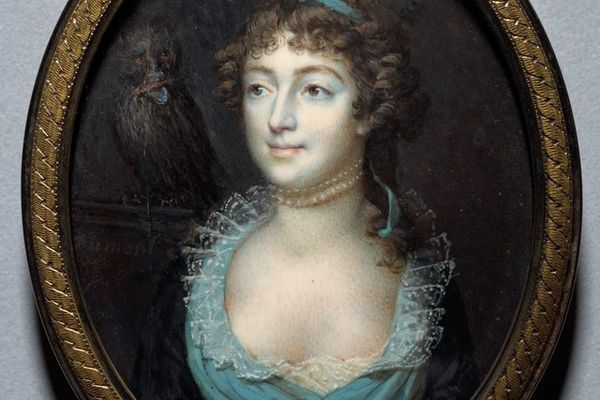
Who Was Marie-Anne Lenormand? The Prophetic Seer of the Revolution Still Celebrated Today
Marie-Anne Lenormand (1772–1843) remains one of the most renowned clairvoyants in French history and a key figure in the world of tarot and cartomancy. She rose to fame as the personal fortune-teller to prominent figures during the French Revolution and the Napoleonic Empire—most notably Josephine Bonaparte, the wife of Napoleon.
The Life of Marie-Anne Lenormand
Born in Alençon, France, Marie-Anne Lenormand showed a natural inclination for the mystical arts from a young age. She later moved to Paris, where she established herself as a respected card reader, astrologer, numerologist, and clairvoyant. Her reputation quickly grew among the political and social elite of the time.
Her preferred divinatory methods included:
- Cartomancy (card reading)
- Astrology
- Numerology
- Palmistry
Lenormand’s fame soared as she began predicting significant events, such as the fall of the Jacobin regime, the fate of the French monarchy, and intimate details of Napoleon’s personal life.
A Tomb Covered in Cards and Flowers
Wander through the paths of Père Lachaise Cemetery, and you’ll likely come across a tomb that stands out. Nestled in the narrow third division near the main entrance, it’s perpetually adorned with flowers, lucky charms, and Lenormand card decks, both “Grand” and “Petit.”
This is the final resting place of Marie-Anne Lenormand, a famed clairvoyant who was consulted by “all of Paris during the Directory and even by Louis XVIII during the Restoration.” Her grave has become a sacred pilgrimage site for tarot and oracle enthusiasts, who still leave offerings in her honor.
The Lenormand Legacy
Although Marie-Anne Lenormand did not create a tarot deck herself, her name lives on through the iconic Lenormand deck—specifically the Petit Lenormand, a 36-card oracle deck inspired by the systems she used in her readings.
Published after her death, the Lenormand deck has become one of the most widely used tools for cartomancy in Europe and Latin America.
You can explore the Lenormand Tarot Deck through our Gypsy Tarot Reading on the site. Each card features everyday symbols (like the Clover, the Ring, the Tower, the Fox), and when combined, they offer clear, intuitive insights into real-life situations.

The Seer of All Paris
Known as Mademoiselle Lenormand, she passed away in 1843 and is considered the most famous clairvoyant of the early 19th century. Her passion for tarot, prophecy, and oracles began in childhood.
She was once enrolled in a convent, where, according to legend, she developed clairvoyant abilities and played at being a prophetess—something that eventually led to her expulsion. At just 14, she moved to Paris and found work as a bookstore apprentice. Later, she opened her divination parlor hidden beneath her own bookshop.
By fate—or perhaps by destiny—she crossed paths with Saint-Just, Marat, and Robespierre, predicting their downfall, according to the Association of Friends of Père Lachaise Cemetery (APPL). “All the most influential figures of the Revolution came to her for readings.”
Her clientele included politicians, painters, actors, and even Princess de Lamballe, head of Queen Marie Antoinette’s household, as well as Josephine de Beauharnais, who eventually became a close confidante. However, when Lenormand published a revealing work exposing “secrets of the infertile Empress,” her relationship with the imperial court turned sour. Napoleon had her arrested and imprisoned multiple times for her controversial predictions.
A Small Story Within a Grand History
Though she’s best known today for the oracles that bear her name, Lenormand explored many forms of divination, including tarot, palm reading, molten lead divination, and coffee grounds interpretation. Some even claim she practiced necromancy.
“She carefully crafted her own legend through the many books she published during her lifetime,” notes the French podcast Une Histoire Particulière, “to the point where it’s now difficult to separate fact from fiction in her biography.”
After a final stint in prison, Lenormand left Paris a wealthy woman and returned to her hometown. Upon her death in June 1843, she was honored with a grand funeral—an undeniable testament to her fame.
Parisian card merchants quickly seized the moment, selling decks said to be created by the seer herself: the Grand Lenormand and the Petit Lenormand—decks that followers still place on her tomb today, “to be charged and guided by the spirit of the woman who whispered prophecies into the ears of the powerful.”
A Spiritual Legacy That Endures
Marie-Anne Lenormand was much more than a fortune-teller—she was a visionary woman who carved her path in an era when practicing esoteric arts could be dangerous. She defied societal norms, lived by her intuitive gift, and helped lay the foundation for modern card reading as we know it today.
Her name endures as a symbol of mystery, accuracy, and esoteric wisdom, inspiring a new generation of seekers to explore the unseen and trust their intuition.



